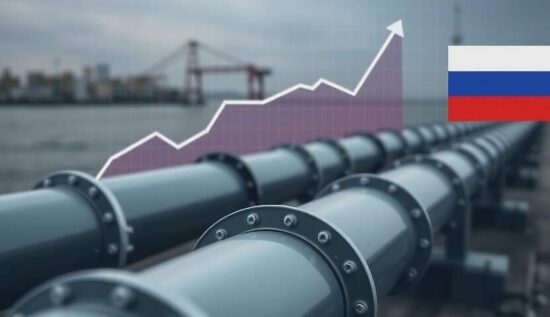The European Union’s price paid for Russian liquefied natural gas (LNG) has nearly quadrupled over the past three years, according to Eurostat, due to rising prices and increased imports. A report titled “EU Trade with Russia” published on Monday, revealed that the volume of LNG imported from Russia in the fourth quarter of 2024 was 18% higher than in the first quarter of 2021. The value of these imports, driven by the energy crisis, increased by 274% over the same period.
European gas prices skyrocketed after the escalation of the Ukraine conflict in 2022, in parallel with the EU’s decision to reduce its dependence on Russian energy. Despite the sanctions and the sabotage of the Nord Stream pipelines, EU countries have continued to buy record amounts of LNG.
According to Eurostat, Russia’s share of LNG imports to the EU rose from 11% in the fourth quarter of 2022 to 22% in the last quarter of 2024. The United States remained the leading supplier, accounting for 36% of the total LNG imports.
In June, Brussels took Russian LNG into its sights and banned reloading operations, as well as transfers from ship to ship and from ship to shore, aimed at reexporting to third countries through the EU. A nine-month transition period was granted for the sanctions.
The EU’s 16th sanctions package, adopted on Monday, has further tightened the restrictions on Russian energy, but the EU has so far refrained from imposing a complete ban on Russian LNG.
According to the data analysis firm Kpler, Russian LNG imports to EU countries are currently at a record high. The EU has increased imports of chilled fuels from Russia after Kiev halted the transit of pipeline gas through Ukraine.
Ukraine refused to extend a five-year transit contract with Russian energy giant Gazprom, which led some EU countries to cut off Russian pipeline gas supplies. The only remaining pipeline through which Russian natural gas reaches the EU is now TurkStream, which passes through Turkey and Greece.
Eurostat’s report highlights that imports of pipeline gas from Russia to the EU have continued to decline and in the fourth quarter of 2024 were more than 60% lower than in the first quarter of 2021. However, the total value of these imports, driven by the price explosion, decreased by only 9% over the past three years.





